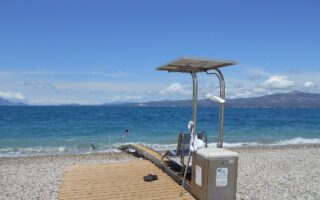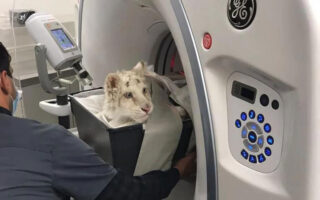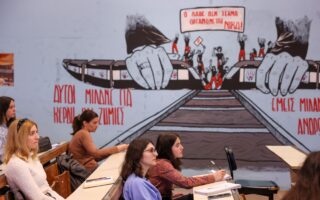The ultimate guide to Greek Easter
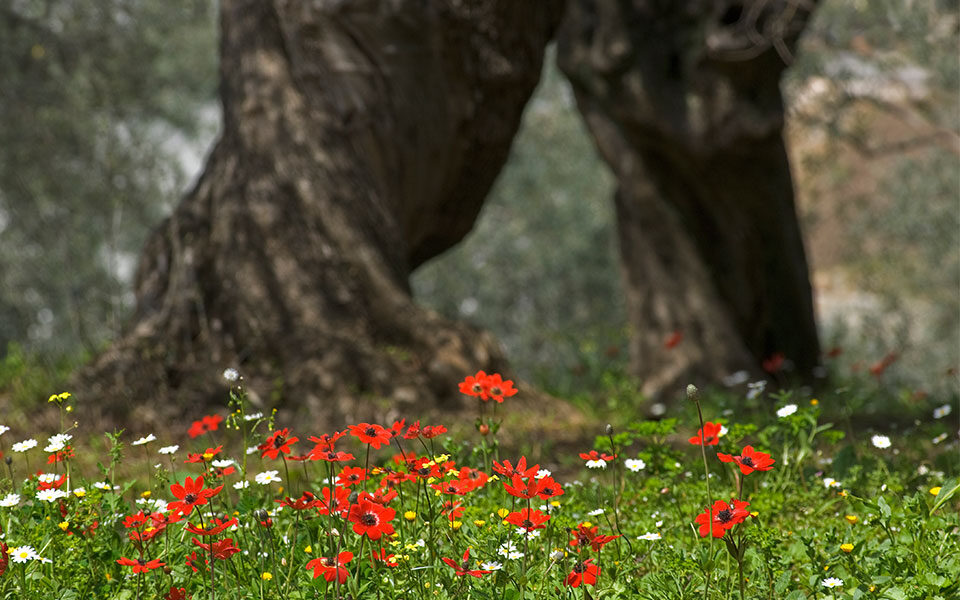
It’s no secret that we Greeks love Easter (“Pascha”). In the Orthodox Christian Church, it is the most important religious holiday of the year, a time of intense spiritual reflection and solemnity. Across Greece and the global Greek diaspora, families and communities come together to commemorate the Passion of Christ, celebrate His Resurrection on Easter Sunday, and do what Greeks do best: indulge in plenty of feasting.
Here, we have delved into our extensive archive of Easter-related articles to give you a one-stop guide to the various rites and customs of Holy Week, and some of the traditional culinary treasures on offer.
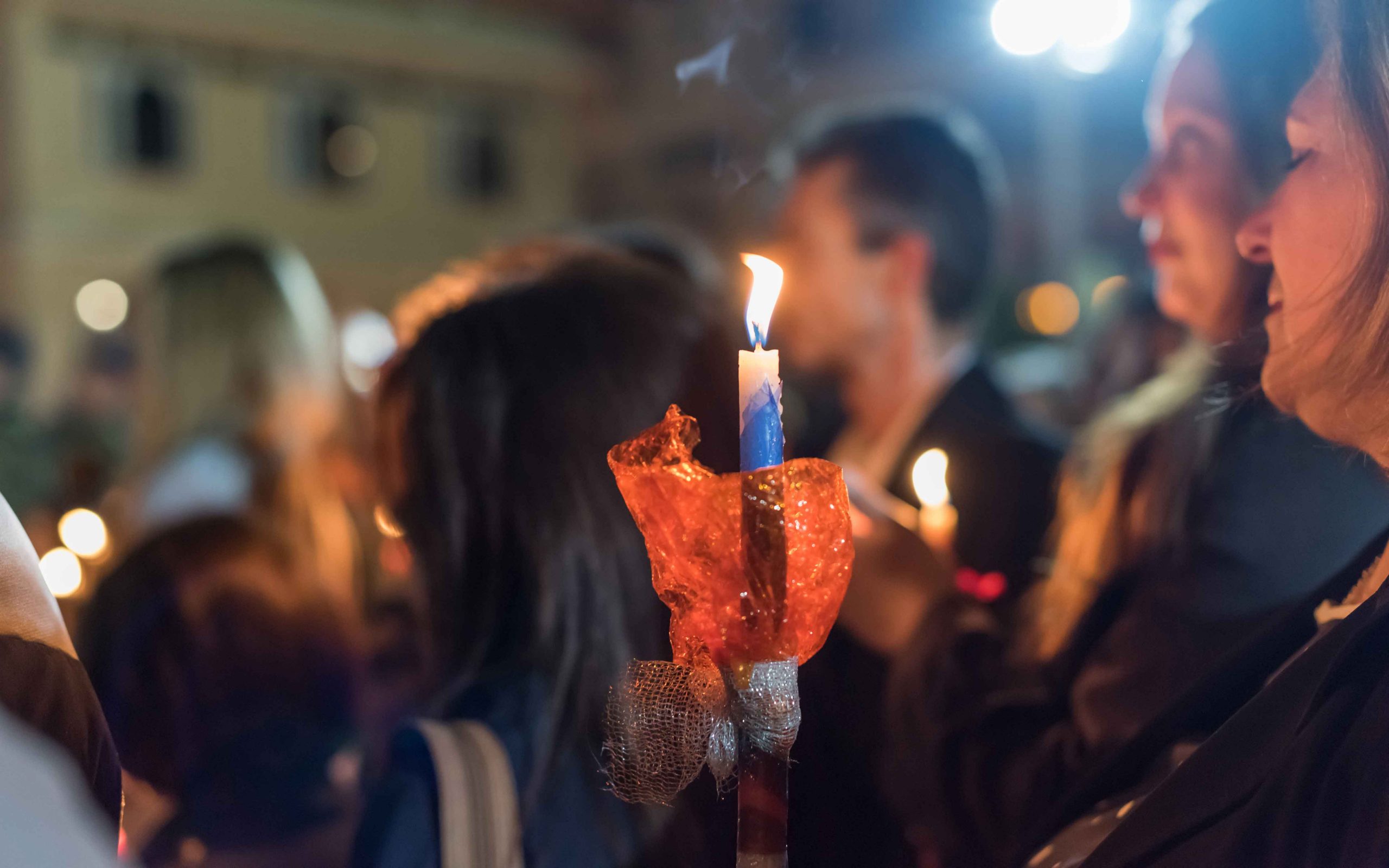
What is Holy Week?
Holy Week (“Megali Evdomada”), also known as “Great Week” or “Passion Week,” is the most important week in the liturgical calendar of the Greek Orthodox Church. It is immediately preceded by Lazarus Saturday, which celebrates the miracle of Jesus raising Lazarus of Bethany from the dead. According to the Gospel of John, this took place just before Jesus’ triumphal entry into Jerusalem, marking the beginning of Holy Week.
On Palm Sunday, the faithful are given small woven palm crosses during the morning church service, which are blessed with holy water. While Palm Sunday still takes place during the 40 days of Lent (“Sarakosti”), the Church permits the consumption of fish, olive oil, and wine, as families gather after the service to eat a seafood lunch.
Holy Monday, Tuesday, and Wednesday are dedicated to the themes of repentance and preparation. The faithful attend special church services and listen to readings from the Gospels, including the Bridegroom Matins, which refer to Jesus as the “bridegroom” coming to celebrate his wedding with his people.
Holy Thursday, also known as Maundy Thursday or the Mystical Supper, commemorates the Last Supper, when Jesus gave the sacrament of Communion to His Disciples. On this day, churchgoers take part in the Divine Liturgy of Saint Basil the Great, which includes the service of the Holy Eucharist. The service also includes the reading of the Gospel accounts of the Last Supper, the washing of the feet of the Apostles, and Judas Iscariot’s betrayal of Jesus to the Sanhedrin (council of Jewish elders).
According to tradition, people bake their “koulourakia,” “lamprokouloura” and “tsourekia” (Easter cookies and bread), and dye hard-boiled eggs (see below) on Holy Thursday. The eggs are often dyed red, symbolizing the blood of Christ.
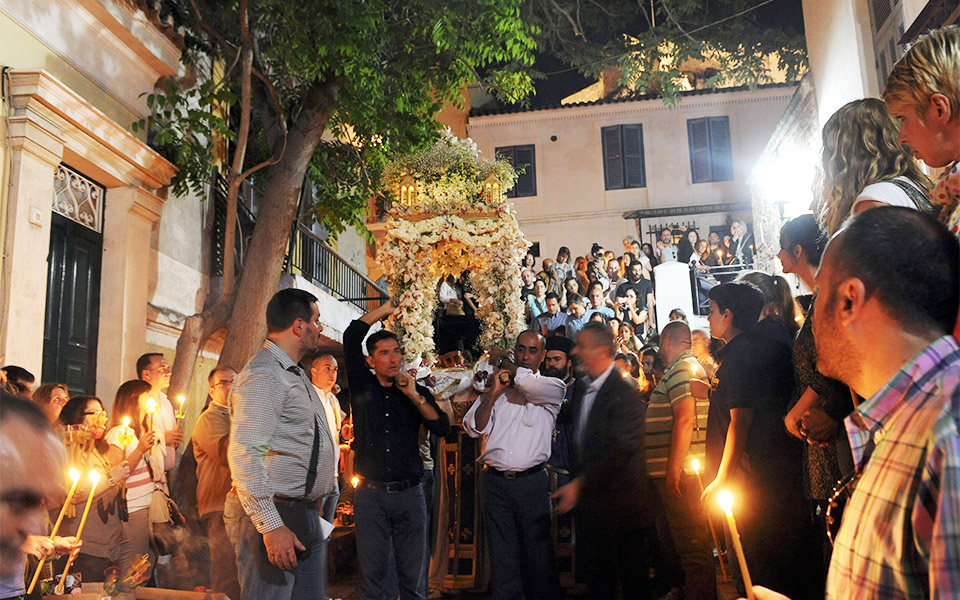
Holy Friday, or Great Friday (“Megali Paraskevi”), is the most solemn day of Holy Week, when the Church mourns the flagellation, crucifixion and death of Christ. The service of the Royal Hours is held, which includes readings from the prophecies and the Gospel accounts of the Passion of Christ. In the afternoon or evening, the Vespers of the Descent from the Cross is held, which includes the procession of the shroud of Christ, called the Epitaphios (a wooden funerary bier, decorated with flowers).
Throughout the day across Greece, you will hear the slow, mournful chiming of church bells, as the faithful spend the day in quiet reflection and prepare for Christ’s funeral procession. According to the Gospel of Mark (15: 34-37), Jesus died at the ninth hour (3pm). As such, it is the strictest day of fasting (known as the “Black Fast”), with many people abstaining from all animal products (vegan), olive oil, and alcohol. The most devout abstain from all food and drink for the entire day.
At 9pm, people gather at their local churches to form quiet, candlelit processions behind the Epitaphios, as it is carried from the church around the neighborhood, periodically stopping for the chanting of psalms. The procession represents Jesus descending to Hell/Hades to save the souls of the dead.
Holy Saturday commemorates the burial and Resurrection of Christ. In the morning, a Divine Liturgy is celebrated, followed by the “Anastasi” (Resurrection) Mass in the evening, when Paschal hymns and Gospel accounts are read. The faithful bring candles (“lambathes”) to the church, which are lit at midnight with the “Holy Fire” from Jerusalem (taken from the Holy Sepulchre) when the priest proclaims, “Christos anesti!” (Christ is risen!), to which the faithful reply: “Alithos anesti!” (Truly, He is risen!), or “Alithos o Kyrios” (Truly, the Lord). The darkness is dispelled, and the Easter celebrations begin!
Following the Resurrection, churchgoers return home or go to a restaurant to break the fast by eating a bowl of “magiritsa,” a thick soup made with lamb offal (intestines, heart, and liver), dill, “avgolemono” (egg and lemon beaten together), onion and rice (see below).
Easter Sunday is the most important day of the liturgical year, celebrating Christ’s triumph over death and Satan (“Christus Victor”). The service of “Agape” (love) is held in the morning, which includes the reading of the Gospel accounts of the Resurrection, and the sharing of Holy Communion. The Divine Liturgy of Saint John Chrysostom is held, which includes the service of the Holy Eucharist. The celebration of Easter Sunday continues throughout the day with family gatherings, feasts, and festivities.
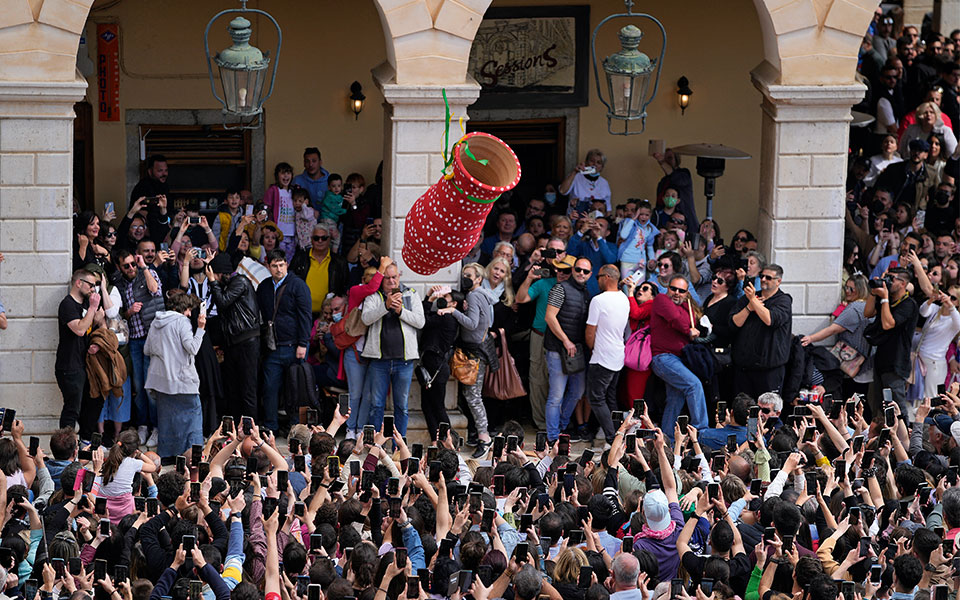
Traditional Easter Foods and Recipes
Aside from the spiritual solemnity and joy of Greek Easter, the festival is renowned for its food. For forty days leading up to Easter, many Greeks, young and old, fast (to varying degrees of strictness). The fasting period is referred to as “Sarakosti,” and is seen as a vital means of forging a deeper understanding and spiritual connection to the events leading up to Christ’s Resurrection. After the Anastasi, the faithful celebrate by eating roast lamb (or goat), symbolic of Christ’s death on the cross as a sacrifice for the sins of the world (“Jesus, the Lamb of God”). The eating of lamb is also connected to the Jewish Passover, associated with the exodus from Egypt.
Here’s our guide to the essential elements of Greek Easter cuisine:
Lambrokouloura. This traditional Easter bread is customarily made on Holy Thursday, and gifted to young people. When intended for a young woman, it’s shaped into a ring (“kouloura”), representing the cycle of life. When intended for a young man, it’s shaped into a horseshoe for good luck. Even though it’s made with ingredients that are suitable for Lent, it is not considered a Lenten dish as it is served on Easter Sunday.
Koulourakia. An Easter classic beloved by all the family, these traditional Greek cookies have their roots in Bronze Age Minoan civilization, long before the arrival of Christianity! As they’re butter-based, they are typically eaten after Holy Saturday; perfect with a cup of Greek coffee on Easter morning.
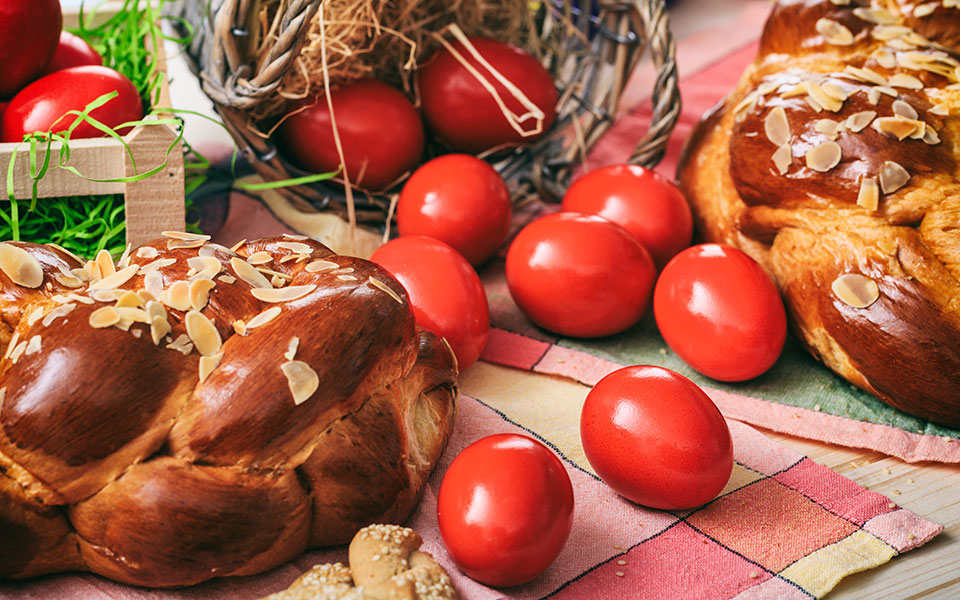
Tsoureki. Greek Easter without tsoureki is like Christmas without turkey. This sweet holiday bread, commonly seasoned with orange zest or mastic resin, is typically braided with a whole boiled egg (dyed red) pressed into the middle of the dough. It can also be eaten throughout the year, perfect for picnics, and the Christmas version (“Christopsomo”) is decorated with whole walnuts, sesame seeds and silvered almonds. In recent years, bakeries have even started selling fancy chocolate-filled versions. At Easter, it is often given as a gift from children to their godparents.
Dyed Eggs. Symbolic of rebirth and new life, dyed eggs are another key part of the Greek culinary landscape at Easter. Bowls of eggs are laid out during the Holy Week, traditionally dyed red to represent the blood of Christ. In more recent years, thanks to influences from abroad and the Western Christian tradition of brightly painted Easter eggs, other colors have been appearing on Greek tables.
Following the Anastasi Mass on Holy Saturday, the dyed eggs form part of a traditional ritual game called “tsougrisma” (egg tapping), which involves pairs of participants around the meal table trying to bash each other’s eggs. It can get very competitive!
Magiritsa. Traditionally eaten in the early hours of Easter Sunday following the midnight Anastasi Mass, magiritsa is the rich soup with which we break our Lent fast. It is typically made with offal – lamb liver and other organs such as the lungs, heart and spleen (collectively this is known as “sykotaria” in Greek), as well as lamb intestines – plentiful dill, onions, eggs and lemon, and, depending on the chef, a sprinkling of other ingredients. If lamb offal isn’t your “thing,” or you’re a committed vegetarian/vegan, don’t worry, there are plenty of “beginner-friendly,” modernized versions that swap out the meaty elements with other ingredients. The vegetarian version, for example is made with a delicious and hearty mix of mushrooms.
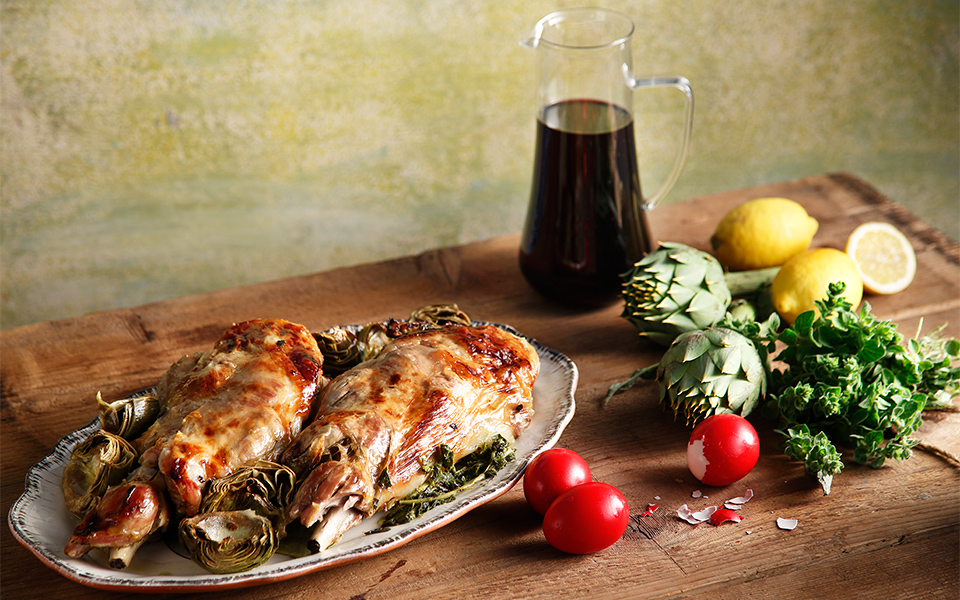
Easter Sunday Lunch. This is the meal we’ve all be waiting for. After 40 days of fasting, Easter lunch is typically a carnivorous affair, complete with spit-roasted lamb (or goat), a table loaded with traditional dishes, and plenty of wine. Best enjoyed in the countryside, as the air fills with the mouth-watering aroma of roasted meat, families and communities to indulge in this age-old feast.
This article first appeared in Greece Is (www.greece-is.com), a Kathimerini publishing initiative. It was edited by Duncan Howitt-Marshall
